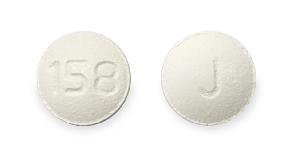Tolterodine Interactions
There are 640 drugs known to interact with tolterodine, along with 7 disease interactions, and 1 alcohol/food interaction. Of the total drug interactions, 90 are major, 526 are moderate, and 24 are minor.
- View all 640 medications that may interact with tolterodine
- View tolterodine alcohol/food interactions (1)
- View tolterodine disease interactions (7)
Most frequently checked interactions
View interaction reports for tolterodine and the medicines listed below.
- Aspir 81 (aspirin)
- Aspirin Low Strength (aspirin)
- Benadryl (diphenhydramine)
- Celebrex (celecoxib)
- CoQ10 (ubiquinone)
- Cymbalta (duloxetine)
- Eliquis (apixaban)
- Fish Oil (omega-3 polyunsaturated fatty acids)
- Gemtesa (vibegron)
- Lasix (furosemide)
- Lipitor (atorvastatin)
- Lyrica (pregabalin)
- Metoprolol Succinate ER (metoprolol)
- Metoprolol Tartrate (metoprolol)
- MiraLAX (polyethylene glycol 3350)
- Myrbetriq (mirabegron)
- Norco (acetaminophen / hydrocodone)
- ProAir HFA (albuterol)
- Probiotic Formula (bifidobacterium infantis / lactobacillus acidophilus)
- Symbicort (budesonide / formoterol)
- Synthroid (levothyroxine)
- Tylenol (acetaminophen)
- Vitamin B12 (cyanocobalamin)
- Vitamin C (ascorbic acid)
- Vitamin D2 (ergocalciferol)
- Vitamin D3 (cholecalciferol)
- Xanax (alprazolam)
- Xarelto (rivaroxaban)
- Zoloft (sertraline)
- Zyrtec (cetirizine)
Tolterodine alcohol/food interactions
There is 1 alcohol/food interaction with tolterodine.
Tolterodine disease interactions
There are 7 disease interactions with tolterodine which include:
- angle-closure glaucoma
- GI/urinary obstruction
- CNS
- hepatic dysfunction
- myasthenia gravis
- QT prolongation
- renal dysfunction
More about tolterodine
- tolterodine consumer information
- Compare alternatives
- Pricing & coupons
- Reviews (78)
- Drug images
- Side effects
- Dosage information
- During pregnancy
- Drug class: urinary antispasmodics
- Breastfeeding
- En español
Related treatment guides
Drug Interaction Classification
| Highly clinically significant. Avoid combinations; the risk of the interaction outweighs the benefit. | |
| Moderately clinically significant. Usually avoid combinations; use it only under special circumstances. | |
| Minimally clinically significant. Minimize risk; assess risk and consider an alternative drug, take steps to circumvent the interaction risk and/or institute a monitoring plan. | |
| No interaction information available. |
See also:
Further information
Always consult your healthcare provider to ensure the information displayed on this page applies to your personal circumstances.


